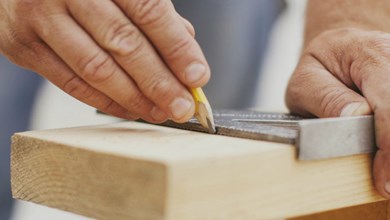When you imagine your dream home, what does it look like? It probably has an amazing exterior and interior. Perhaps there are copper accents, a huge media room, a spa bath – is it two storeys? However you envision your perfect home, don’t give up on that dream! But you do have to think about other important factors. After all, finding the right home isn’t just about aesthetics; it’s also about ensuring that your investment is economical, sustainable and flexible for various lifestyle factors in the future. There a range of sustainability standards that your new home must follow, however they all provide real benefits. They will save you money on bills and reduce your impact on the environment. Not sure what areas to focus on? We’ve compiled a handy list to show you how to keep costs down.
Choose the Right House Design to Save on Heating and Cooling
Choosing the right size home for your needs and having a great design will significantly reduce the need for heating and cooling. Be mindful of windows picking up breezes. Make sure bedrooms and main living areas are protected from the warm afternoon sun. This will reduce energy bills and ensure that each room isn’t receiving harsh lighting or suffering from overheating. Looking for inspiration? Check out our modern home designs to kickstart your creative process!
Opt for Gas and Solar Power
Power bills can skyrocket if you’re not using alternate energy sources. Instead of electricity, try using gas – it’s cheaper and produces fewer greenhouse gas emissions. Solar power is also a great option, as it produces clean energy and the incredible savings mean that the system will be paying for itself in just a few years.
Choose Energy Star Home Appliances
Investing in appliances with high star ratings will save you a lot of money in the future. Energy Star certified goods, such as refrigerators and washing machines, save you tonnes of money by using less water and energy, helping you reduce greenhouse emissions and air pollutants.
Make Running Your Home Affordable
Wherever possible, use the fan instead of the air-conditioning and continue to be water-wise to keep saving money. If you buy closer to the CBD, chances are you’re purchasing an older home without all the modern conveniences you crave, and with higher possibility of repairs and maintenance. Consider building your own home further out from the city to capitalise on innovative design options and your personal preferences. Building your dream home might be a lot easier than you think.
Make Building Your Home Sustainable
Sustainable living practices are a sure-fire way save money and reduce damage to the environment. If you’re wondering how to make your home more sustainable in the building stages, look into new building practices, alternative materials, energy-smart appliances and even the orientation of your home. If you’re keen to know what else can be added to your home for sustainable living practices, have a chat to your builder to see what they recommend.
Choose a Masterplanned Community
A sustainable home in a masterplanned living community can be a lot more self-sufficient than houses in older suburbs. This is because your dream home will be built to utilise various surroundings such as parks, shopping centres, schools and growing job opportunities. Masterplanned communities are also built to be in close proximity to public transport and walking and cycling paths to reduce the use of cars. Living in a developing suburb ensures that you will be surrounded by ever-evolving options to suit your lifestyle needs.
Look for Green Star Rating Tools
Since 2004, Stockland has been a member of the Green Building Council of Australia (GBCA). Stockland has been an active participant in the shaping of policy and development of the Green Star rating tools. Green Star tools are used across all our business units in both the design and development stages of the project lifecycle.
To learn more about Stockland’s corporate sustainability, view our Asset Ratings and Certification document.



